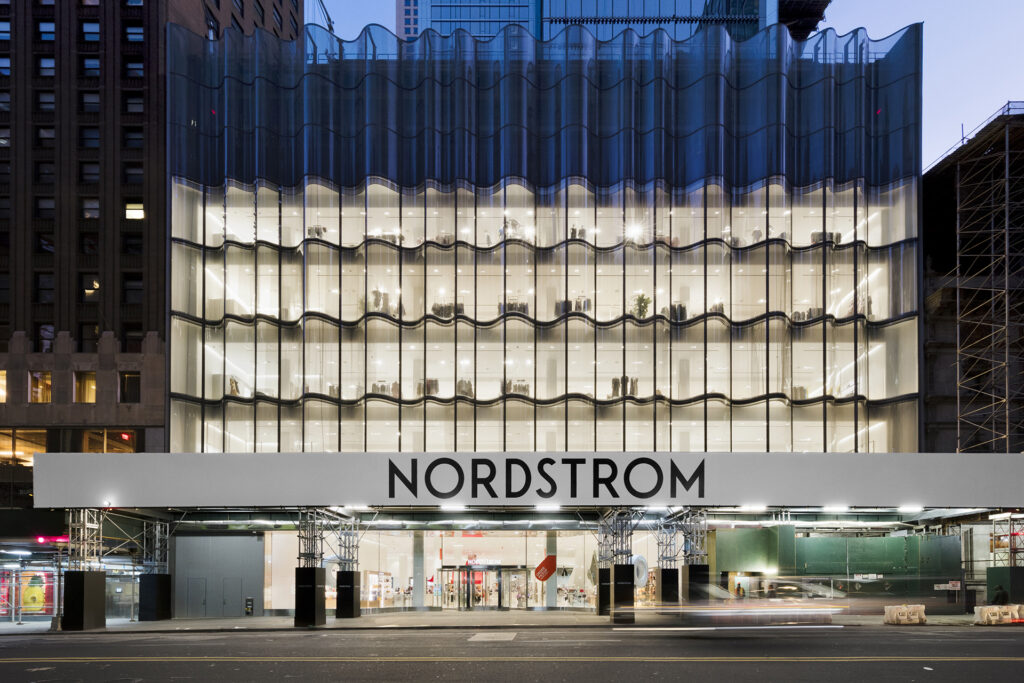HAVING WRITTEN SEVEN BEST-SELLING BOOKS on the subject, Colin Shaw has been called one of the pioneers of the CX (Customer Experience) industry. The founder & CEO of Beyond Philosophy LLC and one of LinkedIn’s “World Top 150 Business Influencers”, Colin shares his view on the good, the bad and the ugly of the current state of CX.
- The good: many companies have ridden the wave of CX change and grown as a result, which is undeniably good. These companies truly understand that valuing their customers’ time and emotions are at the heart of effective CX.
- The bad: when companies see competitors investing in CX and decide they should too, but do so without any real commitment or sensitivity to the end user. In other words, they lose sight of who Customer Experience is really for.
- The ugly: when companies wilfully or unknowingly misunderstand and misapply the principles of CX, yet are surprised when they don’t get the returns they expected.
- [6-min read]

The Good: Going On An Emotional Journey With Your Customers
When the retailer Nordstrom opened a department store in New York, instead of setting up a standard shop, they chose to launch with a bang. The new store included AR suit fittings to help customers visualise the fit before they committed to paying for tailoring, giving them more time to make a purchase decision. At the other end of the customer journey, they established automated return booths that allowed customers to save time – one of the main tenets of good Customer Experience. Both set Nordstrom apart from many of its competitors.

My best example of the impact of our work in this area is with our client Maersk, the largest shipping company in the world. We began by asking the question: what drives value for you? To answer, we conducted research based on customer emotions. This is out of the ordinary in our field. Normally customer service is governed by product, service and cost, but this is precisely the sort of thinking we believe should be done away with.
The next step was to ask what, bearing customer emotions in mind, was the experience Maersk was trying to deliver? The answer was that they wanted their customers to feel trust, cared for, and pleased. We then set about designing the experiences accordingly and assessing what processes were causing the opposite emotions. This experience was designed alongside a customer-centric assessment of the organisation.
The result was that Maersk improved their Net Promoter Score by 40 points over 30 months. This in turn led to a 10% rise in shipping volumes. In other words, they received a return and gained more loyal customers. You don’t need any further proof that CX works when done properly.

The Bad: Failing To Invest In Your CX Ambitions
Customer Experience goes badly wrong when people talk about it with very little follow-through. In recent years we’ve seen a lot of examples of this, many of which you’ll be familiar with from daily life. For example: you order cable and pay extra for installation, hoping to have everything sorted for you. The engineer arrives, installs the cable and leaves. Turns out he’s mis-installed it and you don’t know what to do.
You then spend two hours on the phone to their support team – precisely the sort of situation you were hoping to avoid – who seem unsure about a course of action. Eventually, another engineer is sent out to you and fixes the problem within five minutes. The result? A lot of irritation and frustration on your part, which is hardly conducive to customer loyalty. The cause? Insufficient willingness to invest in the training of the support team and to send out a second engineer. In other words: cost.
This sort of issue tends to arise when companies see competitors investing in Customer Experience and decide they should too, but do so without any real commitment or sensitivity to the end user. In other words, they lose sight of who Customer Experience is really for – and the impact on their business is rarely good news in the long run.

Do customer-centric companies get things wrong? Of course they do! But when they do, they tend to:
- admit their mistake
- be more communicative
- react more quickly
- keep customers updated
All of these mean that customer-centric companies make deposits in their customers’ emotional bank accounts. This means that customers have more patience for when things do go wrong, because they feel that they were valued to begin with.
Typically, situations like the cable incident above involve a number of well-intentioned middle and junior managers, who tend to be closer to the customer than senior managers. And while senior management might believe in the concepts behind Customer Experience, they can’t get their senior executives to understand the problem or believe in the need for change, let alone fund it. This is backed up by data from KPMG Nunwood and Forrester, who in 2019 released an index indicating that CX initiatives in the UK and US had stagnated, with even top players having made no improvements. This begs the urgent question: why?
The problem is that many people think they know what it takes to improve the situation – but they don’t. It goes something like this: after a while of getting everyone in the organisation excited about change, what ends up happening is that management flounders around for a bit, short on ideas and expertise, and probably wary of committing too many resources to the effort. This inevitably turns into a period of drift. Management kicks the can down the road and ultimately lets things go back to the way they were. The result is that instead of being classed as a failure of leadership – which it is – Customer Experience takes the hit. Ultimately, no-one wins: neither the end user nor management.
Once, a number of years ago, I was presenting to a client. He and his board were arguing over the cost of my proposed initiatives. While they discussed, I reflected back to moments before when I’d been sat in their lobby. It was undergoing a refurbishment and was being fitted with luxurious furniture and fittings. I proceeded to draw this analogy for them: they were refitting their lobby at great cost, but what hard gains was it going to bring them? My proposed plans were going to bring them tangible gains in both the short and long term for their business, and in the scale of their outfit, were going to represent loose change in expenditure.

The Ugly: Expecting The Wrong Things From CX
The ugly breaks down into three, where Customer Experience is:
- misunderstood
- seen as a cure-all
- not adapted for a specific market or conditions
Change Mindsets, Not Job Titles
A few weeks ago, I was talking to a guy who told me he was in Customer Experience. I asked what he did. He explained he was really in market research, but recently, as he told me:
“I changed my job title to Customer Experience.”
“Oh really?” I replied. “What do you do differently now that you’ve made that change?”
“Nothing,” he said.
I was stunned. He told me he’d changed his job title because senior management had wanted to “get into Customer Experience”.
To me, this exchange perfectly illustrates the problem. This guy’s senior management now think they are covering Customer Experience because they have a team with the right name supposedly dedicated to it! The reality is that they really don’t.
Over my years of working in this space, I know what will happen next. Because they won’t be doing anything different,, they won’t get the results they want. Senior management will look at the supposed investment they made and question the return they are receiving. The consequences can be dire.
To many people working in senior management, Customer Experience is a remote area of their business that they think they should probably get involved with. But because of their distance from the end user, they can be vague and even cosmetic about implementation. They designate someone in their team as Customer Experience purely for appearances’ sake. This is hardly an expression of commitment to Customer Experience, and it does not instill confidence. How are you going to make your end user feel well taken care of if you don’t actually care? What can you expect from this type of dynamic? You can say goodbye to customer loyalty for a start.
Sadly this is not uncommon, but it’s killing the whole area of Customer Experience. Let me be clear: this is a failure of leadership. Senior managers think they can get away with changing job titles, when what they should be changing is mindsets.
CX Is Not A Silver Bullet
“Silver bullet syndrome” is specifically used by software companies, who tell their customers that if they buy a certain piece of software it will solve all their problems. I’m not at all against software, but I do think there needs to be a shift in how we think about it. The implementation of software is an enabler, not a solution.
For instance, there’s no point in splashing out on fancy chatbots if they don’t actually work. Expense is another issue: companies spend far too much on sticking-plaster solutions, which eat up too much money within the organisation. This, of course, leaves the purse empty for complementing digital solutions with real customer-centric service provisions.
We all know the problem is far greater than fixing one thing. It’s human nature to want to find the one thing that’s going to change the world, but in my experience there is never one silver bullet. It takes a multitude of things, applied together, to make positive change.

Don’t Be Like Churchill
I’m still amazed at how organisations do not define what drives value before they begin making changes – and their refusal to adapt to changing market conditions and customer behaviours can be even more detrimental. Just because something works well in one given situation, it doesn’t guarantee your success in another.
In 1945 Winston Churchill lost an election by a landslide. This was not because he’d been a bad wartime leader, but because the war was over and the population didn’t want things to return to the way they were before the war. Instead, they ushered in a Labour government that gave the country some of its most beloved institutions to this day, such as the National Health Service and the Arts Council. The Covid-19 pandemic will be a similar moment for many sectors.
Customer behaviours and demands have changed so much over the past year that returning to things as they were will be unthinkable. We must demonstrate what we have learned from the pandemic and implement these lessons in order to gain consumer trust in the post-Covid era.
About the Author
Colin Shaw is the founder & CEO of Beyond Philosophy LLC who helps organizations improving their Customer Experience. Colin is recognized by LinkedIn as one of the “World’s Top 150 Business Influencers”, as a result he has 289,000 followers of his work. The Financial Times selected Beyond Philosophy LLC, as one of the best management consultancies for the last two years. Colin has written seven bestselling books on Customer-driven growth. He is the co-host of the highly successful Intuitive Customer podcast. Colin is a commentator on CNN, BBC TV, NPR, LBC and many other publications and media.
To get more insights from experts in the experience economy and members of our Founding Circle like Colin – and to be the first to know about our membership programme, events and more – sign up to the WXO community here.





